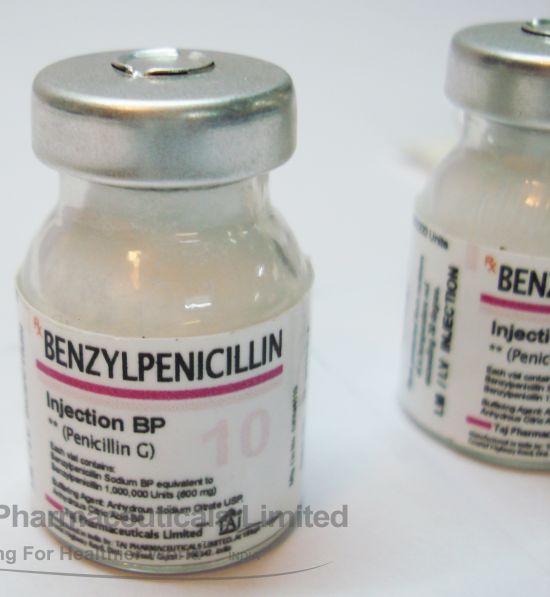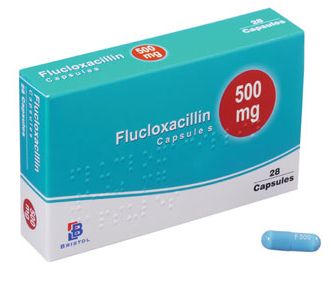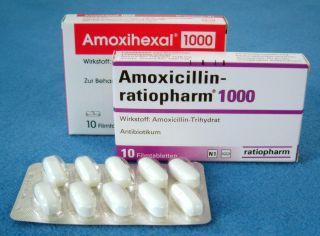Definition of "Beta-lactam"
Beta-lactam is a class of antibiotics, that contain a beta-lactam ring.
Patient information
Beta lactam. What's that? How's that different from an alpha lactam?So beta lactams are named this way, because they have a beta lactam ring. Lactam is just a ring version of the amide. Beta just means that the nitrogen is attached to the beta carbon, relative to the carbonyl carbon (double bonded to an oxygen).
Penicillin (aka penams) is a group of antibiotics, that are less effective, as many types of bacteria are now resistant. They were among the first effective against previously serious diseases (including syphilis, and infection by staphylococci and streptococci). They are now used in usually Gram-positive organisms. There are also now several enhanced penicillins. Examples are:
- Narrow spectrum:
- Beta-lactamase sensitive (1st generation), including:
- Benzylpenicillin (aka penicillin G, benpen), for syphilis, meningitis, endocarditis, pneumonia, lung abscesses and septicemia in kids
- Beta-lactamase sensitive (1st generation), including:

Source: Taj Pharma
-
-
- Benzathine benzylpenicillin
- Procaine benzylpenicillin
- Phenoxymethylpenicillin
- Propicillin
- Pheneticillin
- Azidocillin
- Clometocillin
- Penamecillin
- Beta-lactamase resistant (2nd generation), including:
- Cloxacillin, including:
- Dicloxacillin, effective against beta-lactamase-producing organisms, e.g. Staph aureus, which is otherwise resistant to most penicillins
- Flucloxacillin (aka fluclox), which unlike other beta-lactams has effect against Staph aureus as it is beta-lactamase stable
- Cloxacillin, including:
-

Source: Bristol Labs
-
-
- Oxacillin
- Nafcillin
- Methicillin
-
- Extended spectrum:
- Aminopenicillins (3rd generation):
- Amoxicillin (AMK, Amoxil), better absorbed orally than other beta-lactams, and one of most presribed for kids)
- Aminopenicillins (3rd generation):

Source: AmazonAWS
-
-
- Ampicillin (aka amp), roughly equivalent to amoxicillin in terms of activity. It includes:
-
- Pivampicillin
- Hetacillin
- Bacampicillin
- Metampicillin
- Talampicillin
- Epicillin
- Carboxypenicillins (4th generation):
- Ticarcillin, and Timentin (TIM, Ticarcillin+cluvanate)
- Carbenicillin/Carindacillin
- Temocillin
- Ureidopenicillins (4th generation):
- Piperacillin (aka anti-pseudomonal penicillin), an extended spectrum beta lactam. It provides activity against the hospital pathogen Pseudomonas aeruginosa. It is commonly used w/ the beta lactamase inhibitor tazobactam (TAZ, product name Tazocin, Zosyn), although it still doesn't work against MRSA
- Azlocillin
- Mezlocillin
-
Patient information
Penicillins. They're so common. What are they?So penicillins are a type of these beta ringed amides. They are less effective than they previously were, because of antibiotic resistance, and is usually used for Gram positive organisms.
Gram positive, what's that?
So it lacks the outer membrane, and therefore stains. It includes the famous Staph and Strep, basically, and Enterococcus too. Most other things are Gram negative.
Penems, including:
- Faropenem
Carbapenems, including:
- Ertapenem
- Antipseudomonal, including:
- Doripenem
- Imipenem
- Meropenem
- Biapenem
- Panipenem
Cephalosporins is originally derived from the fungus Acremonium (previously known as Cephalosporium). Successive generations after the 1st generation, have increased activity against Gram negative bacteria, albeit often with reduced activity against Gram positive organisms. Examples are:
- 1st generation, predominantly against Gram positive, including:
- Cephalexin (Cefalex)
- Cefazolin
- 2nd generation
- 3rd generation, including:
- Ceftriaxone
- Cefotaxime
- Ceftazidime
- 4th generation
- 5th generation
Patient information
Cephalosporins, these are quite common. I can't believe they're in the same category as Penicillins? Aren't cephalosporins... plants? Spores?They are beta ringed amides, so yes, they are in the same category as Penicillins. And sort of, not plants, but fungus.
So there are numerous generations? Do they become stronger with each generation?
Sort of. The 1st generations are similar to Penicillins, as in being effective against Gram positives. With the later generations, they become more effective against Gram negatives, but this is often at the expense of becoming less effective against Gram positives.
Monobactams, including:
- Aztreonam
- Tigemonam
- Carumonam
- Nocardicin A
Beta-lactamase inhibitors, because the weakness of beta lactams is bacteria often develop resistance by synthesizing beta-lactamase, an enzyme which attacks the beta-lactam ring. This includes:
- Penam, including:
- Sulbactam
- Tazobactam
- Clavam, including clavulanic acid:
- Augmentin [duo forte], which is Amoxicillin + Clavulanic acid
- Avibactam
Patient information
Beta lactamase. What's that?Oooh. It's quite nasty, it's enzymes made by bacteria, to make it resistant to beta lactams, and therefore makes antibiotics like penicillin and cephalosporins INeffective
 !
!
I see. So beta lactamase inhibitors can be used to prevent bacteria from resisting the beta ringed amide antibiotics. Why would you do that?
So you can use the beta ringed amide antibiotics  .
.
- Acts by inhibiting the synthesis of the cell wall of bacteria
- MRSA (Methicillin-resistant Staph aureus) is a bacterium responsible for several difficult-to-treat infections in humans. It is any strain of Staphyloccocus aureus that has developed, through the process of natural selection, resistance to beta-lactam antibiotics, which include the penicillins (methicillin, dicloxacillin, nafcillin, oxacillin, etc) and the cephalosporins. The evolution of such resistance doesn’t cause the organism to be more intrinsically virulent than strains of S aureus, that have no antibiotic resistance, but resistance does make MRSA infection more difficult to treat with standard types of antibiotics and thus more dangerous. It is especially troublesome in hospitals, prisons, and nursing homes, where patients with open wounds, invasive devices, and weakened immune systems are at greater risk of nosocomial infection than the general public. MRSA began as a hospital-acquired infection, but has developed limited endemic status, and is now sometimes community-acquired. The terms healthcare-associated MRSA and community-associated MRSA reflect this distinction
- MSSA (Methicillin-sensitive Staph aureus) are strains UNABLE to resist these antibiotics are classified as, i.e. the antonym to MRSA
Patient information
MRSA. What's that? I've heard it, and it's meant to be a super nasty bug?Yeah. So it's a Gram positive, it's Staph. But whereas Staph can usually be attacked by Beta lactams, MRSA cannot.
What does it stand for?
Methicillin-resistant Staph aureus. Methicillin is only 1 type of penicillin, but it's just the 1 that's chosen. It actually refers to all of the penicillins, and in fact, cephalosporins too, so basically, it means it's resistant to beta amide ring antibiotics generally.
- Antibiotics (category)
Find a practitioner
Practitioner count: 0